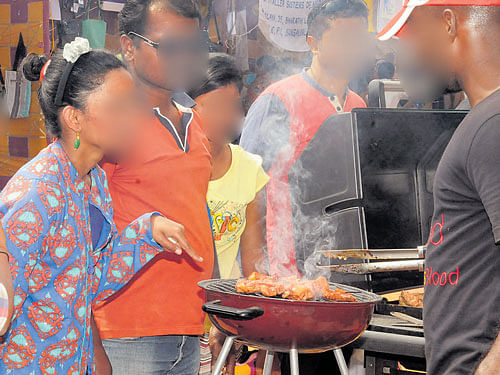
The truth is often bitter, shocking and in this case, sprinkled with irony. In a country where 270 million people live below the ‘poverty line’ and survive on less than Rs 20 a day, a gradation in obesity among the middle and upper-middle class on the other end of the spectrum is a cause of concern. Rising income, advancement of technology and urbanisation have resulted in a change in the consumption pattern and lifestyle of people here. As a result, obesity is on the rise, raising questions on what we consume and how we live.
Health experts say that obesity is a combination of genetic and social factors and intake of processed and packaged food, high calories, alcohol, sugars, preservatives and artificial ingredients are its best friends. Dr M Ramesh, a consultant bariatric surgeon with AV Hospitals and Vikram Hospitals, cites increase in stress levels of modern routine and sleep apnea as reasons too for obesity. He adds, “Increase in stress causes mental hunger which results in weight gain. The diet today is also completely skewed. Our diet is mainly rich in carbohydrates and fats, rather than protein and adding junk to this diet is harmful. The polished rice that we consume lacks fibre and vitamins that adds to obesity.”
Dietician Silky Mahajan cites burgers, pizzas, quick-fix snacks and other forms of junk food as items that are rich in fat and lack nutrition. “Today, people are looking at other options such as preparing pizzas at home. Our diet should be colourful like a rainbow – with at least three servings of fruits and vegetables everyday so that we have adequate quantities of fibre in our body. However, it is not only about the diet but also about the quantity of food we eat.” If such simple factors are not paid heed to, the consequences are drastic and many; ranging from cardiovascular diseases, diabetes, joint disorders to knee pain, high blood pressure and osteoarthritis.
But what’s scarier is the increase in adolescent and teenage obesity. Silky adds that she works with children who suffer from obesity and obesity-related disorders such as hypothyroidism from the age of six. Bengaluru-based agency, Edu Sports, conducted a recent survey on 4, 000 school students across 15 cities and found more than a quarter of the students to be overweight. Doctors cite the main reason for childhood and teenage obesity as lack of exercise, spending too much time on screen and indulging in a variety of junk food as they are exposed to swanky commercial advertisements and a range of options. Today, parents also lack the time to prepare home-cooked food.
However, childhood obesity is grappled with sociological and psychological factors as Kala, a counsellor with Inner Dawn Counselling Services explains this process as a vicious cycle. “Body image plays a very important role here. It’s about how the child perceives his or her image and how much they want to be accepted amongst their group. If they can’t identify with their image, it results in low self esteem, depression and anxiety. Bullying and ridiculing are other factors. All these combined may result in over-eating or binge-eating.”
The common myth that chubby and overweight children being looked at as healthy must be busted as overweight children tend to become obese in the long run and suffer from diseases. However, the solution lies beyond eating healthy and indulging in home-made food. Ramesh adds that one should concentrate on the entire behavioural pattern of eating as a whole.
“Weight depends on speed and the amount of consumption. Snacking between meals should be avoided. Stick to a meal time and follow it, as otherwise it leads to acidity formation. One should enjoy their meal for 15-25 minutes and not drink too much water while eating as well.”
He agrees that a way forward now is awareness and early intervention by parents and schools. “